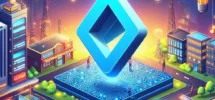Imagine stepping into a vast digital jungle for the first time. You’re holding a machete of curiosity, a map made of tutorials, and a backpack full of confusion. Now, the first question every brave explorer (a.k.a. beginner programmer) asks is this: “What’s the best programming language to learn?” Just like choosing the right sword for battle or the best vehicle for a desert journey, the choice of your first programming language can shape your entire coding experience.

Let’s decode the easiest entry points into the coding universe, all while spotlighting the best programming language to learn for beginners. Here’s a friendly lineup of languages that are like training wheels on the bicycle of software development.
1. Python – The Swiss Army Knife of Programming
If programming languages were animals, Python would be a loyal Labrador—friendly, reliable, and eager to help. It speaks almost like English:
pythonCopyEditprint("Hello, world!")
See that? No weird symbols, no rocket science. This simplicity is what makes Python often hailed as the best programming language to learn for beginners. Whether you’re dreaming of building a game, analyzing data, automating boring tasks, or dabbling in AI, Python opens doors gently.
Its readability is like a well-written children’s book—easy to follow, even if you’re completely new. And best of all? Python has a massive community. Think of it as a bustling bazaar where you can find answers, tools, and friends.
2. JavaScript – The Magic Wand of the Web
If websites were living creatures, JavaScript would be the soul that animates them. Want to make a button glow, a form react, or a game pop up in a browser? JavaScript is your tool.
Because it’s everywhere. All modern browsers run JavaScript, and you don’t even need to install anything fancy. You just open a browser and start tinkering. It gives beginners an instant sense of achievement.
JavaScript’s syntax is a bit trickier than Python’s, like switching from a bicycle to a scooter. But once you start rolling, it’s thrilling.

3. Scratch – Programming with Building Blocks
Think Lego meets logic. Scratch, developed by MIT, is a visual programming language where you snap blocks together to make characters move, talk, and play music. It’s perfect for kids—or adults who need a gentle introduction before diving into code.
Although Scratch isn’t a traditional “real-world” language, it’s a great first taste of best programming language to learn concepts like loops, events, and conditionals. It prepares your brain for more advanced syntax without scaring you off.
4. Ruby – The Gentle Poet
Ruby feels like writing a story. It’s slightly less popular now, but still an amazing entry point.
Ruby’s creator once said he wanted a language that made programmers happy. And indeed, Ruby reads like poetry. For someone who fears math or logic-heavy code, Ruby says, “Don’t worry. Let’s take it slow.”
5. HTML/CSS – The Paintbrushes of the Internet
Technically, HTML and CSS aren’t programming languages—they’re markup and styling languages. But for beginners, they’re the gateway to understanding how the web looks and behaves.
Learning HTML and CSS is like understanding the grammar and art of a website. It doesn’t teach logic, but it builds confidence. And that emotional win is often what nudges beginners toward asking, “What’s the best programming language to learn next?”
Choosing Your First Sword
So which is the best programming language to learn first?
- Want instant results? Try JavaScript.
- Love clean, readable code? Start with Python.
- Prefer visuals over text? Play with Scratch.
- Into beautiful, expressive syntax? Explore Ruby.
- Just want to make websites? Begin with HTML/CSS.
The truth? The best programming language to learn is the one that excites you enough to keep going. Once you fall in love with solving problems, switching to other languages becomes much easier.
Like learning your first musical instrument, the key is to play—and play often. So grab that keyboard, open a tutorial, and let the journey begin.
Welcome to the world of code


